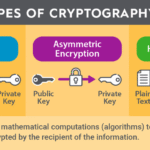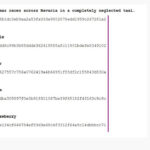Steganography, an intriguing branch of cryptography, revolves around the clandestine practice of concealing secret messages within mundane formats. Unlike traditional cryptography, which focuses on encrypting the content itself, steganography prioritizes obscuring the existence of the message. This article will delve into the methodologies utilized in embedding hidden messages within image files, elucidating the various techniques and considerations involved in this nuanced discipline.
At its core, steganography leverages the redundancy in digital images. Almost every image file contains extraneous data that does not contribute to the final visual output. By manipulating this superfluous data, one can imbed a message without perceptibly altering the image itself. Understanding the inherent structure of images is crucial for the successful application of steganographic methods.
The primary technology underpinning steganography is the Least Significant Bit (LSB) method. This technique exploits the fact that the alteration of the least significant bits of pixel color values is unlikely to be detected by the human eye. For instance, consider an 8-bit grayscale pixel, where each pixel value ranges from 0 to 255. By manipulating the least significant bit of each pixel, one can encode binary data. If a digital image is analyzed and the pixel values are altered minimally — for example, changing 10111000 to 10111001 — the visual differences remain imperceptible, yet the binary message can be extracted by someone privy to the method of encoding.
Moving beyond LSB, one encounters more intricate approaches such as masking and filtering. This technique involves altering regions of an image to create subtle changes that still reside within the threshold of human perception. For instance, by adjusting the intensity levels or colors in specific regions, steganographers can introduce meaningful information without raising suspicions. This method reaches beyond merely embedding messages to altering the very fabric of the image in an orchestrated way.
Another sophisticated technique is called Transform Domain Steganography. This method operates not in the pixel domain but rather in the frequency domain — specifically, using transformations like Discrete Cosine Transform (DCT) and Discrete Wavelet Transform (DWT). By converting the image into its frequency components, it is possible to embed messages in specific frequency bands where alterations will not disrupt the overall perception of the image. This method is often employed in JPEG images, where DCT plays a pivotal role in compression. Steganographic messages can thus be embedded in the coefficients of the transformed image.
Each steganographic technique has its strengths and weaknesses, and the choice of method often depends on the intended application and the level of security required. For instance, while LSB is simplistic and straightforward, it is also one of the easiest methods to detect through statistical analysis. Advanced algorithms are often implemented to safeguard against such vulnerabilities, incorporating various error-detecting codes and randomization techniques to obfuscate patterns associated with message embedding.
Moreover, the amount of data that can be safely concealed within an image varies considerably among different techniques. LSB can typically accommodate the least amount of data, whereas transform domain methods may allow for more substantial information storage. However, larger payloads can draw attention and may significantly disrupt the visible integrity of the image, thus necessitating a careful balance between capacity and imperceptibility.
Embedded within the technical operations of steganography lies a multitude of ethical considerations. The same techniques that can safeguard communications in oppressive regimes are also available for nefarious purposes. The use of steganography in cybercrime, piracy, and other illicit activities poses significant challenges for law enforcement and cybersecurity professionals. As a result, a continuous arms race exists between the development of steganographic methods and the emergence of detection systems. Various algorithms, such as Chi-square analysis and histogram analysis, have been developed to discover hidden messages, spanning the spectrum from amateur sleuthing to sophisticated forensic examinations.
The practical applications of steganography extend beyond mere communication security. Industries dealing with sensitive information — such as finance, medicine, and governmental operations — often seek reliable methods to safeguard transactions and communications against eavesdropping. Additionally, steganography finds relevance in digital watermarking, wherein subtle signals within digital content signify ownership or copyright information. This intersection of artistry and technology showcases the multifaceted nature of steganography.
When embarking on the practice of steganography, practitioners must adhere to meticulous data handling protocols. Preemptive steps, such as selecting the appropriate image format, considering file size, and employing tested encryption methodologies before embedding, are essential for ensuring the resilience of the hidden information. Common image formats like BMP, PNG, and JPEG may exhibit distinct characteristics affecting steganographic implementations; thus, a keen understanding of file types is imperative.
In conclusion, steganography serves as a vital shield in the realm of digital communication, enabling the hiding of information in the most unsuspecting of places. Varying techniques, including LSB, masking, and transform domain methods, offer an array of options tailored to specific needs. While ethical considerations, capacity, and imperceptibility persist as central themes in its application, the evolution of steganography remains a testament to the ongoing quest for secure communication in an increasingly interconnected digital landscape. Engaging with steganography demands a disciplined, thoughtful approach ensuring both efficacy in the embedding process and vigilance in ethical practice.








Leave a Comment